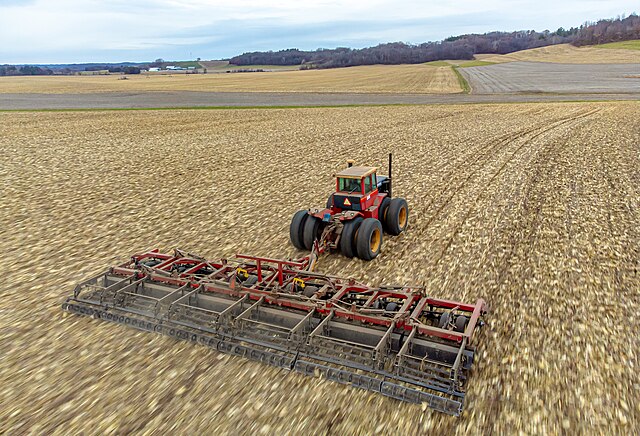
Tillage
Preparation of soil by mechanical agitation / From Wikipedia, the free encyclopedia
Dear Wikiwand AI, let's keep it short by simply answering these key questions:
Can you list the top facts and stats about Tillage?
Summarize this article for a 10 year old
Tillage is the agricultural preparation of soil by mechanical agitation of various types, such as digging, stirring, and overturning. Examples of human-powered tilling methods using hand tools include shoveling, picking, mattock work, hoeing, and raking. Examples of draft-animal-powered or mechanized work include ploughing (overturning with moldboards or chiseling with chisel shanks), rototilling, rolling with cultipackers or other rollers, harrowing, and cultivating with cultivator shanks (teeth).

(Click for video)
Tillage that is deeper and more thorough is classified as primary, and tillage that is shallower and sometimes more selective of location is secondary. Primary tillage such as ploughing tends to produce a rough surface finish, whereas secondary tillage tends to produce a smoother surface finish, such as that required to make a good seedbed for many crops. Harrowing and rototilling often combine primary and secondary tillage into one operation.
"Tillage" can also mean the land that is tilled. The word "cultivation" has several senses that overlap substantially with those of "tillage". In a general context, both can refer to agriculture. Within agriculture, both can refer to any kind of soil agitation. Additionally, "cultivation" or "cultivating" may refer to an even narrower sense of shallow, selective secondary tillage of row crop fields that kills weeds while sparing the crop plants.